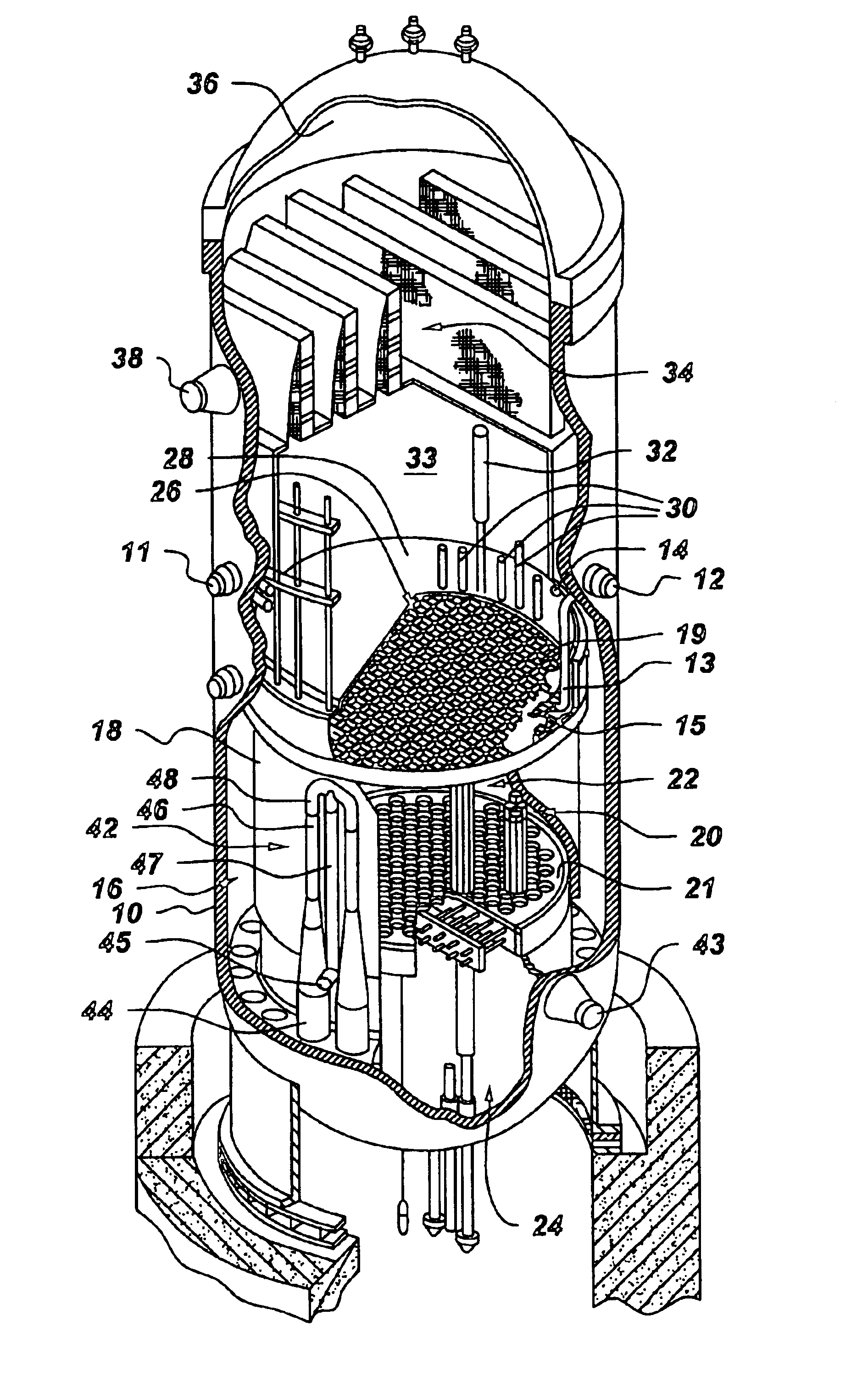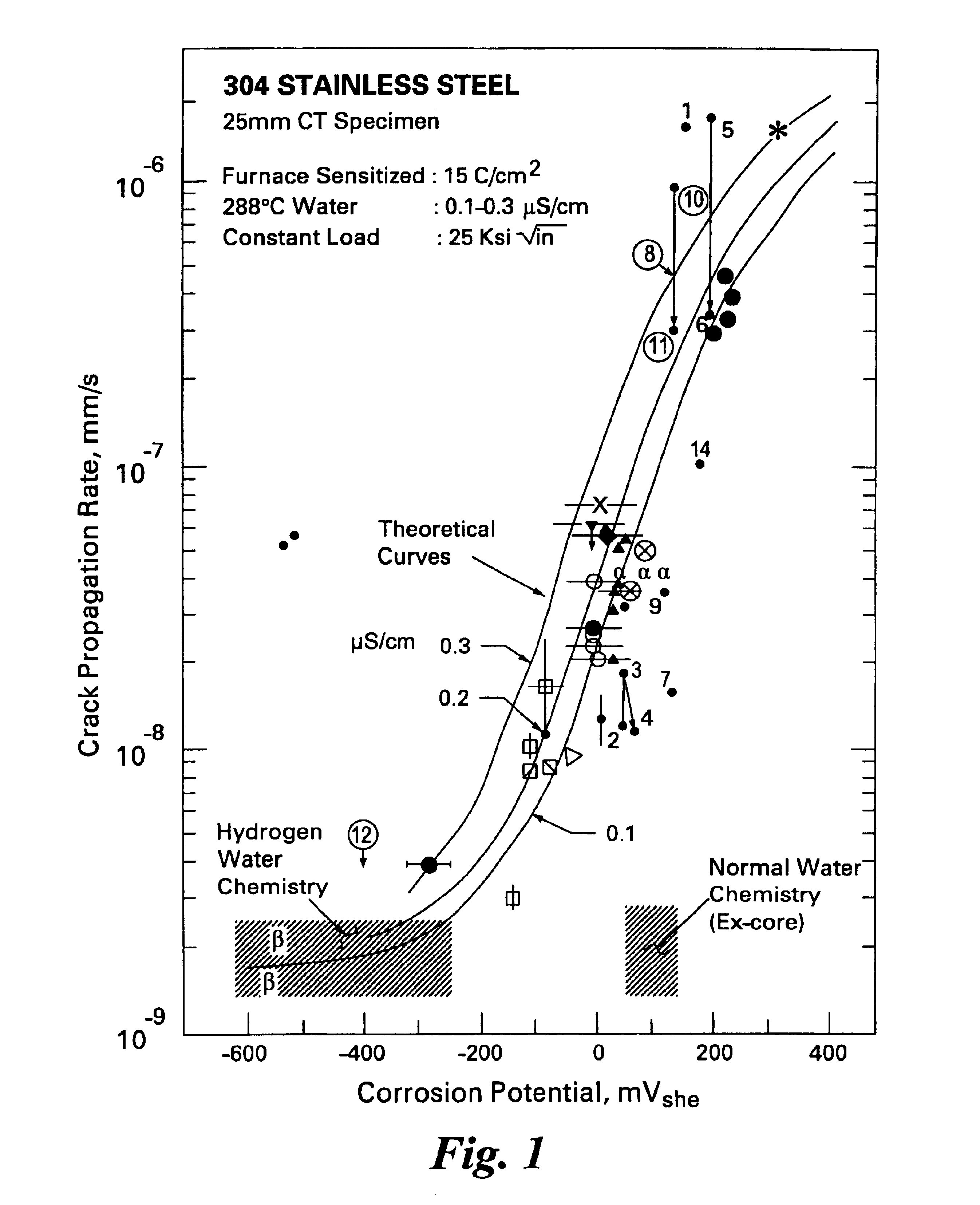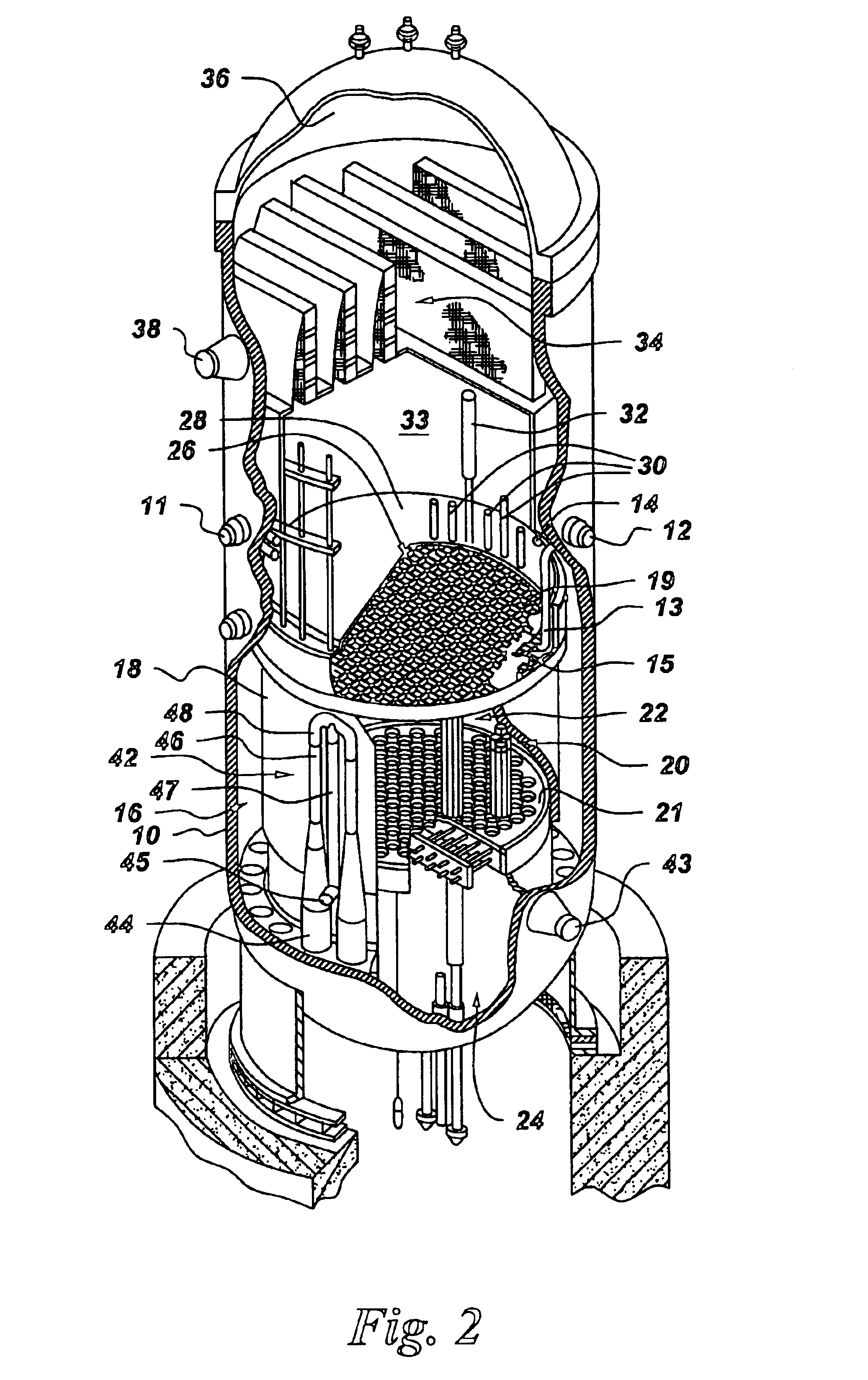Process to mitigate stress corrosion cracking of structural materials in high temperature water
a stress corrosion cracking and structural material technology, applied in the direction of physical/chemical process catalysts, nuclear elements, greenhouse gas reduction, etc., can solve the problems of reducing the level of oxidizing species in the water, promoting intergranular stress corrosion cracking of susceptible materials of construction, and corroding materials exposed to high-temperature water. , to achieve the effect of reducing the electrochemical corrosion potential and reducing the cracking of stress corrosion
- Summary
- Abstract
- Description
- Claims
- Application Information
AI Technical Summary
Benefits of technology
Problems solved by technology
Method used
Image
Examples
example 2
In this example, in situ deposition of a dielectric nanoparticle was conducted to study the effectiveness of longer in situ deposition times. Coupons of Type 304 stainless steel and alloy 600 were immersed in 288.degree. C. water containing 300 ppb of dissolved oxygen for a period of about 31 days. Test electrodes were first immersed in the 300 ppb dissolved oxygen water for a period of about 5 days. After about 5 days, 10 ppm ZrO(NO.sub.3).sub.2 was continuously injected into the water for a period of about 14 days, wherein a dramatic initial reduction in ECP is observed for both specimens, as shown in FIG. 5. After about 22 days, the flow of 10 ppm ZrO(NO.sub.3).sub.2 into the water was discontinued, wherein a marginal increase in electrochemical corrosion potential was observed. It is evident that the addition of ZrO(NO.sub.3).sub.2 to 300 ppb dissolved oxygen water decreased ECP by 50 to 100 mV. Also, the presence of the high oxygen conditions may enhance formation of ZrO.sub.2....
PUM
| Property | Measurement | Unit |
|---|---|---|
| temperature | aaaaa | aaaaa |
| particle size | aaaaa | aaaaa |
| particle size | aaaaa | aaaaa |
Abstract
Description
Claims
Application Information
 Login to View More
Login to View More - R&D
- Intellectual Property
- Life Sciences
- Materials
- Tech Scout
- Unparalleled Data Quality
- Higher Quality Content
- 60% Fewer Hallucinations
Browse by: Latest US Patents, China's latest patents, Technical Efficacy Thesaurus, Application Domain, Technology Topic, Popular Technical Reports.
© 2025 PatSnap. All rights reserved.Legal|Privacy policy|Modern Slavery Act Transparency Statement|Sitemap|About US| Contact US: help@patsnap.com



